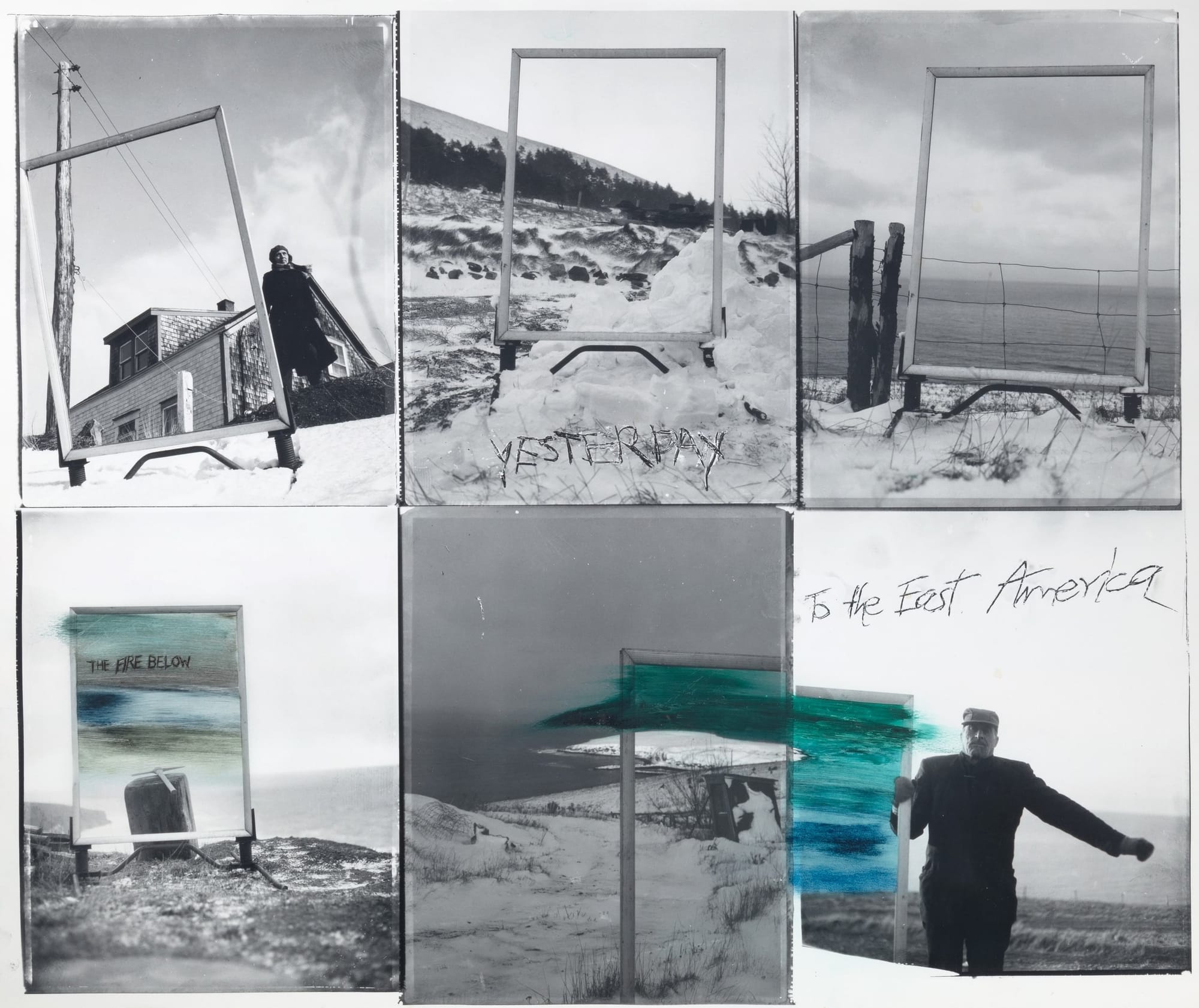
This year marks the 100th anniversary since the birth of the great Swiss-American photographer Robert Frank (1924-2019), whose seven decade career in photography and filmmaking marked a turning point in these two arts. A number of exhibitions and retrospectives are being held in New York at The Museum of Modern Art, Pace Gallery and Anthology Film Archives in commemoration of Frank's visionary artistic practices.
The Museum of Modern Art is offering visitors the chance to view never-before-seen footage shot by Frank, spanning the period from 1970 to 2006. These film reels and videotapes, which had been securely stored away by the artist, came to light after his death in 2019, providing an intimate glimpse into the inner workings of his creative mind. His film editor Laura Israel and the art director Alex Bingham gathered this cinematic material to create a film scrapbook as installation projected on multiple screens. Frank's ever-shifting cinematic gaze conveys a sense of tenderness and immediacy that he succeeded in capturing while shooting scenes with family, friends and collaborators, as well as domestic interiors and cityscapes and coastlines. Robert Frank's Scrapbook Footage is being presented in conjunction with the retrospective The Complete Robert Frank: Films and Videos, 1959-2017, which will be open for viewing until March 31, 2025.

Pace Gallery is featuring an exhibition to coincide with the other events, titled Robert Frank: Hope Makes Visions. Realized in collaboration with the June Leaf and Robert Frank Foundation, the show is accompanied by a monograph from Pace Publishing. Hope Makes Visions focuses on Frank's photographic oeuvre starting from the 1970s onwards, when he took an approach informed by the experiments that he had conducted with a variety of cameras, printing methods and media. The show at Pace displays multimedia works featuring various motifs that Frank revisited throughout his career, providing a deeper insight into Frank's processes and motivations. These artworks are complemented by a set of etchings, journal pages, sketches and other rarely-seen materials. Hope Makes Visions is open to the public through December 21, 2024.
Anthology Film Archives is organizing screenings of Robert Frank's films works from December 12 to 22, 2024. The show is titled Robert Frank Centennial: Influences, encompassing those films which inspired or impacted his philosophy of film, as well as the works of other filmmakers (Jim Jarmusch, Jem Cohen, Sara Driver) on whom his creative vision and energy exerted an influence. His forays into film were very much inspired by his friendships with the Beat writers and poets Jack Kerouac, Allen Ginsberg, Gregory Corso and William S. Boroughs. Pull My Daisy (1959), based on a screenplay adapted from Jack Kerouac's play Beat Generation, captures the spontaneity and improvisatory nature that was held in high regard by proponents of the Beat movement. His later films are characterized by an idiosyncratic mixture of elements from varying genres, resulting in works which defy categorization.

Robert Frank was born in Zürich, Switzerland in 1924, the son of a German-Jewish businessman and Swiss-Jewish mother. He turned to photography as a creative outlet to the business-oriented mindset of his family and received training from Michael Wolgensinger, producing his first photographic works in Wolgensinger's studio. He emigrated to the United States in 1947, where he established himself permanently in New York in 1950. Alexey Brodovitch, the editor of Harper's Bazaar magazine, noticed his talent and employed him as a fashion photographer.
Frank was attracted to the lives of everyday American citizens, capturing the hardships and isolation that they were subjected to during the postwar industrialization of the United States. The iconic photobook The Americans (published in France in 1958) was the culmination of his two-year tour of the United States on a Guggenheim Fellowship. At times raw and melancholic, the photos within this book show a country negotiating racial and social tensions. Frank worked with unusual focal lengths, muted lighting and cropping. These techniques deviated from established norms in the United States.

Robert Frank: Be Happy is currently on view at Museum Folkwang in Essen. The Americans: A Closer Look is open at Zander Galerie in Cologne. In December the show Robert Frank: Mary's Book will open at MFA Boston. For more information visit The June Leaf and Robert Frank Foundation site.
